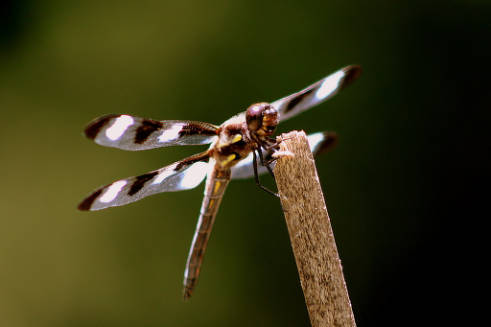 The news is not that imidacloprid is toxic to dragonflies and snails. The chemical is an insecticide after all. No, the surprise in the paper published in PLoS ONE is how much of the stuff was found in surface water. It was enough to kill off 70 percent of the invertebrate species in some places, including mayflies, midges and molluscs.
The news is not that imidacloprid is toxic to dragonflies and snails. The chemical is an insecticide after all. No, the surprise in the paper published in PLoS ONE is how much of the stuff was found in surface water. It was enough to kill off 70 percent of the invertebrate species in some places, including mayflies, midges and molluscs.
The Guardian had the story.
Further, the loss of those species might be affecting birds that are aerial foragers, which have been in decline in North America [PDF]. (Well, the molluscs aren’t feeding aerial foragers, but they are the most endangered taxa in North America anyway.)
The study took place in the Netherlands, but if anything imidacloprid use is more widespread here. Food for thought if you are concerned with mysterious declines in dragonflies, molluscs or aerial foragers.
The point of the study was actually to research honeybee decline. Imidacloprid is a neonicotinoid.
Read The Guardian story here.
Read the PLoS ONE story here. (It’s open access, of course.)
Photo: Twelve-spotted skimmer by Rick L. Hansen, courtesy US Fish and Wildlife Service
